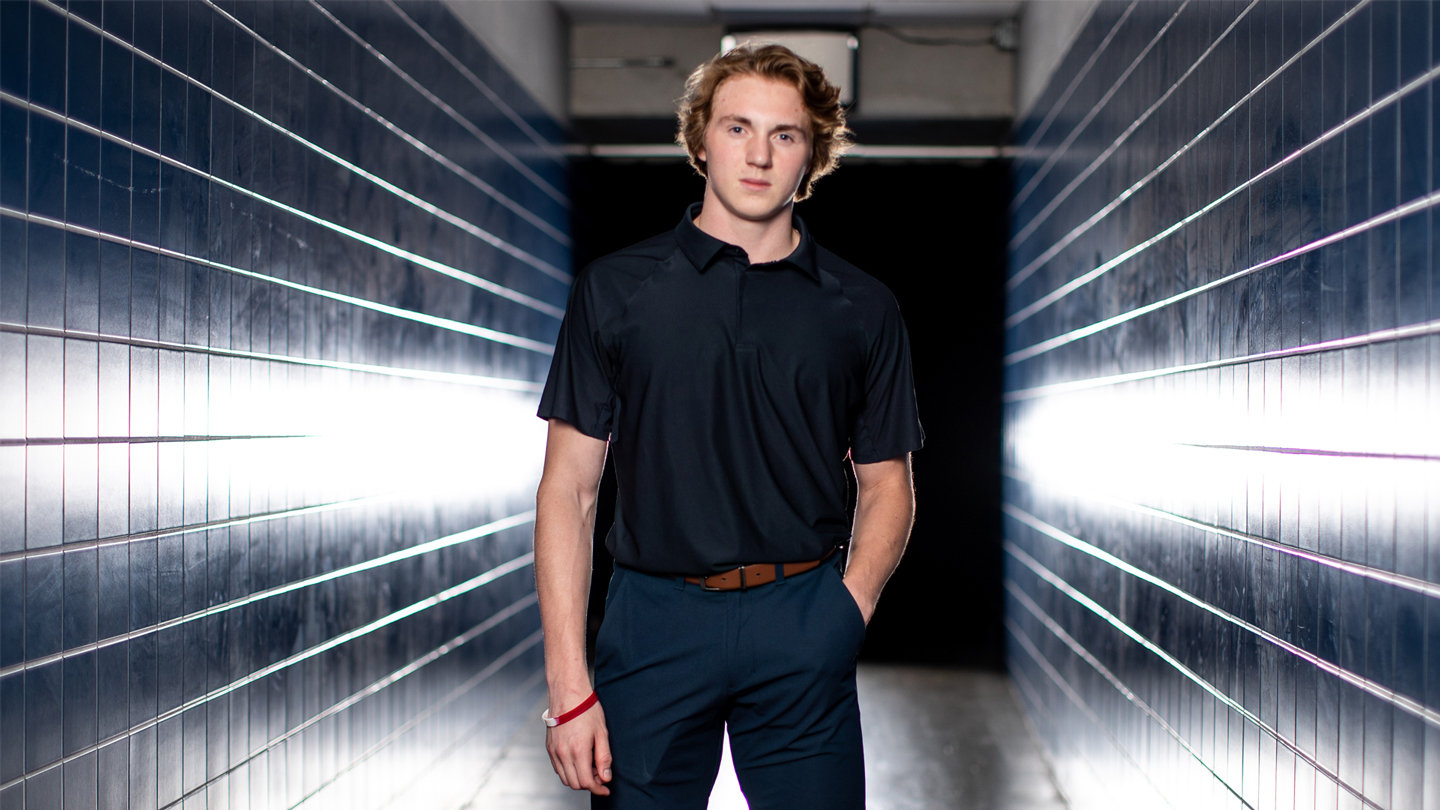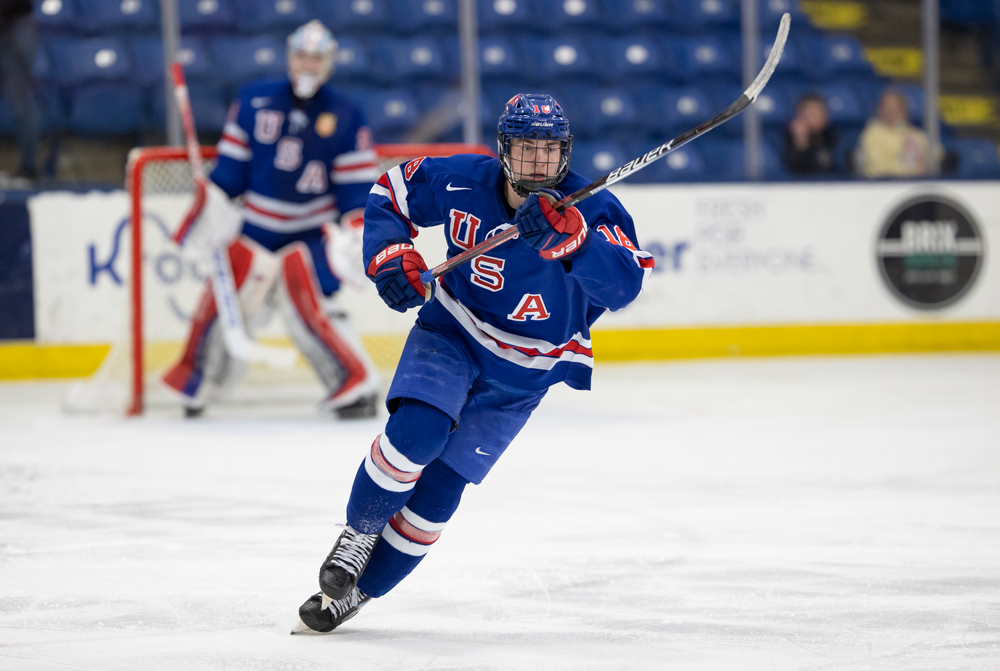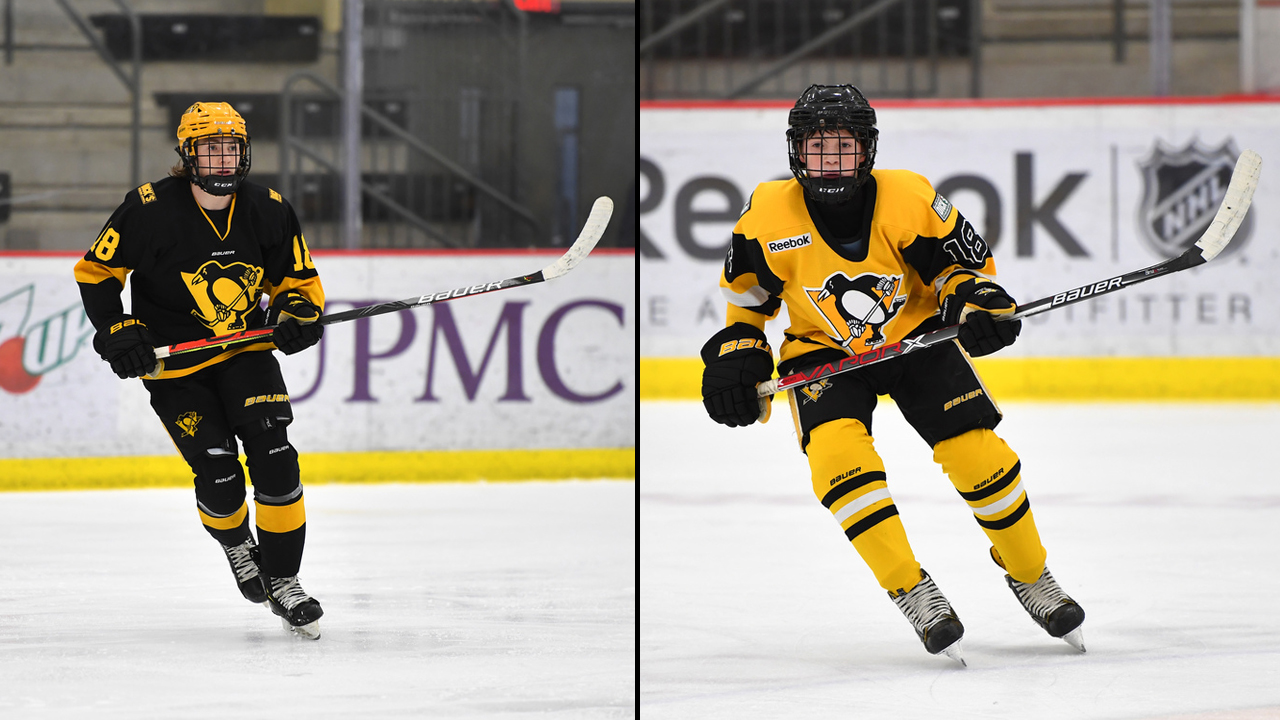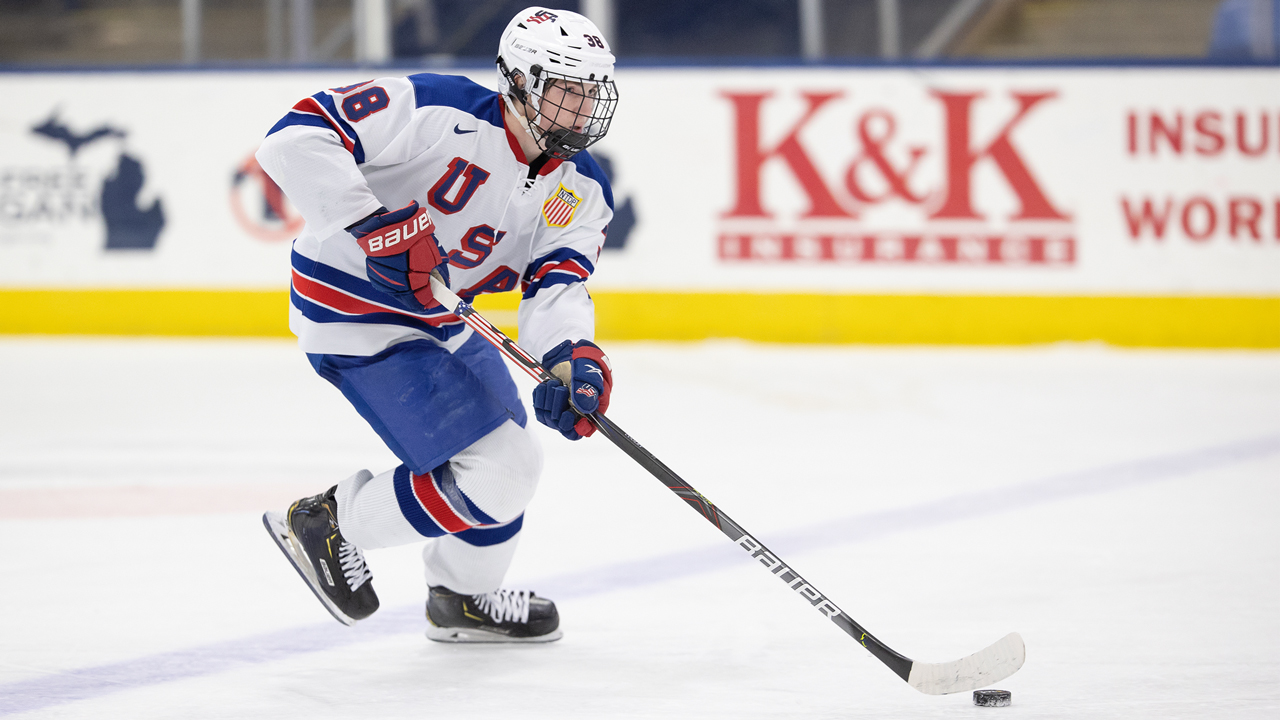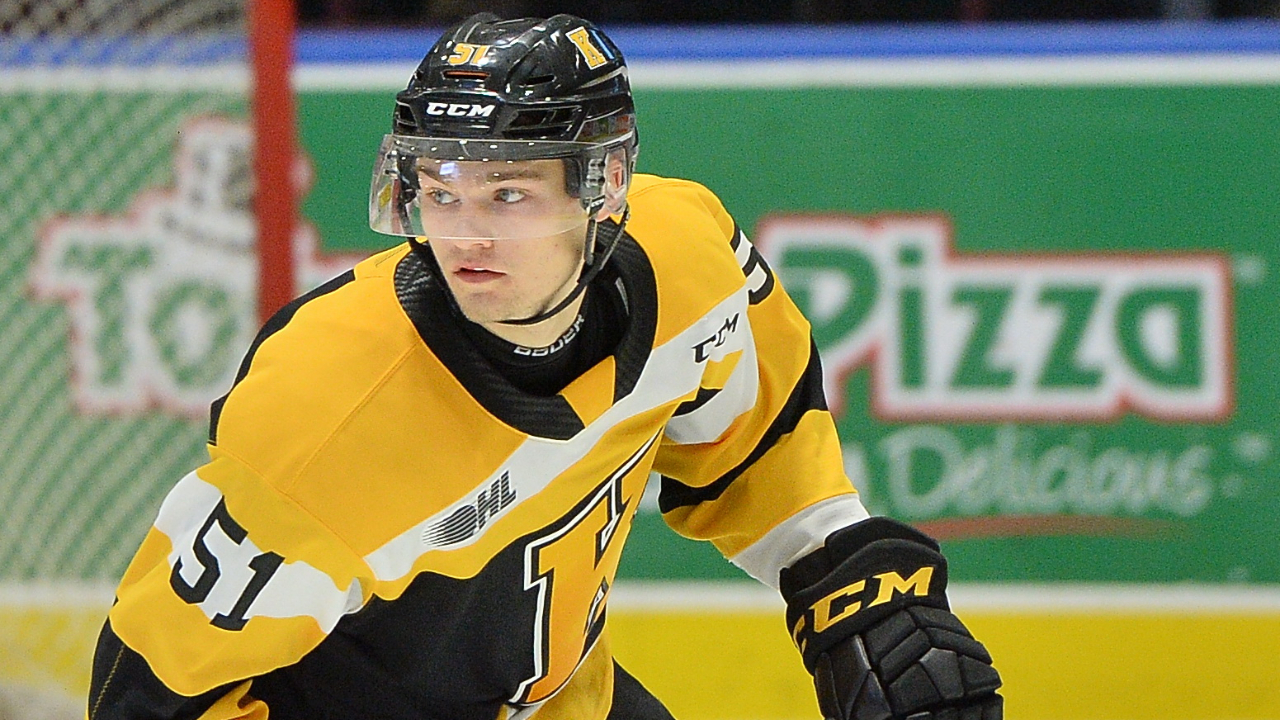F
or a kid coming from the type of hockey community Cooley came from, the U.S. NTDP is the big-time. USA Hockey Arena, the program’s home base in Plymouth, Mich., is hallowed ground. Making that long-awaited jump, taking his talent outside of Pittsburgh for the first time in his young career after five years with the Pens Elite, brought its fair share of nerves. His mom, Cathy, made the move out to Michigan with him to ease the transition. And before long, Cooley was immersed in that high-stakes environment, making strides once again.
“Being able to compete every day in the weight room, in practice, against the best kids in the country at your birth year, it was something that you can’t have anywhere else,” he says. “Like, some practices were even harder than games, that’s just how hard we worked there. We pushed each other to be at our best every day.” Starting his stint with the NTDP’s U17 team, Cooley once again got bumped up as his skill on the sheet began to show. He split that first season, 2020-21, between the U17’s and U18’s, finishing the campaign with 20 goals and 46 points through 47 total appearances.
“I think that’s one of the reasons why they produce so many good NHL players, because there’s really no days off,” he says. “I mean, we’re all in the weight room for two hours, on the ice for two hours, and school. We’re at the rink all day long.”
Soon, he was getting his first shot on the international stage, representing his country at the 2021 U18 World Championships in Frisco, Texas. He chipped in with a pair of assists over the tournament’s five games. He soaked it all in. “I wasn’t really thinking about the NHL at the time,” Cooley says. “I was just extremely happy to be able to represent the U.S., and wear that jersey every day, and be part of that special group [against] the best kids in the world.”


